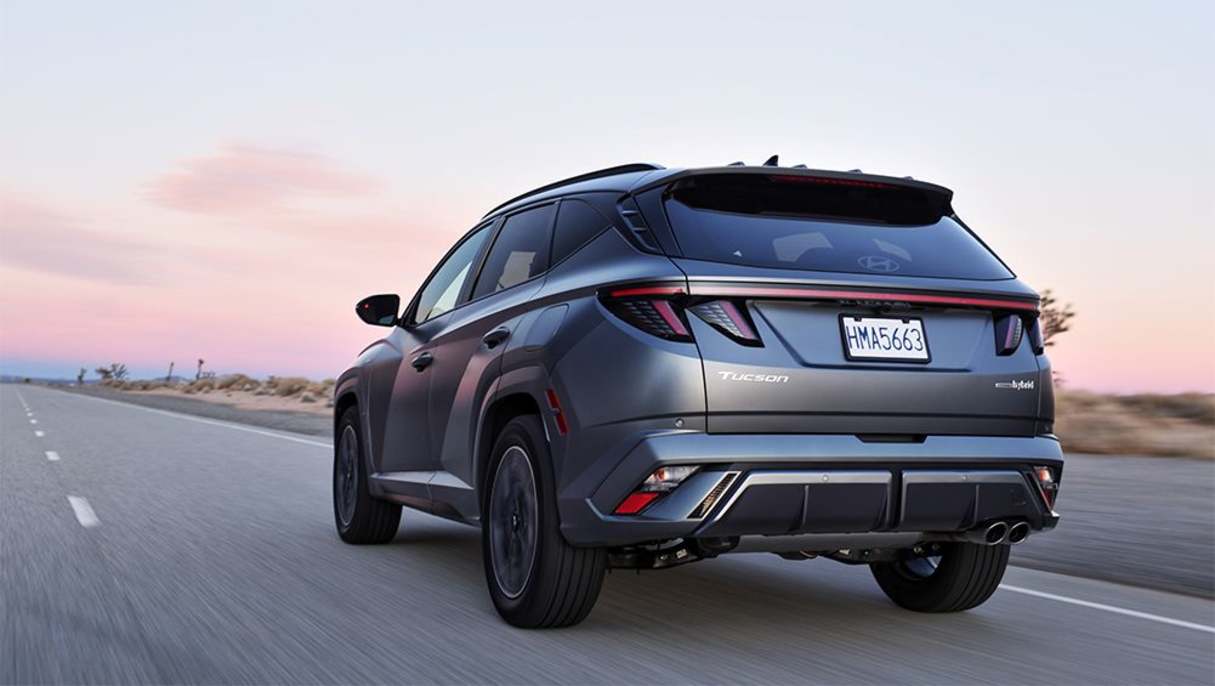Hyundai will undercut a number of key rivals with its Tucson hybrid that lands in Australian showrooms in the coming weeks.
The updated MY25 Tucson range will continue to be offered with a choice of two petrol engines, as well as the petrol-electric hybrid powertrain that is new to the line-up. As previously reported, the 2.0-litre turbo-diesel has been dropped as Hyundai focuses on electrification.
The most affordable hybrid is the front-wheel-drive entry grade, simply called Tucson, and that starts at $45,100 before on-road costs. It’s also offered in mid-spec Elite in front ($50,100) and all-wheel-drive guise ($52,600), while the flagship Premium AWD is $59,600.
As expected, Hyundai has dropped the ‘Highlander’ name and replaced it with ‘Premium’ for the top-spec grade.
An N Line option pack adds $4000 to the price of the base Tucson and $1500 to the other two grades.
That $45,100 hybrid kick off just undercuts the freshly launched Kia Sportage hybrid, which shares its underpinnings and hybrid setup with the Tucson. The Kia starts at $45,950.

Nissan’s X-Trail e-Power hybrid starts from $49,990, while the Honda CR-V e:HEV RS hybrid is $59,900 drive-away.
The most popular hybrid in the segment, Toyota’s RAV4, is more affordable than all of these options, starting from $42,260 BOC. Another cheaper hybrid option is the GWM Haval H6 from $42,490 drive-away.
The new Tucson hybrid uses Hyundai’s 1.6-litre four-cylinder turbocharged petrol engine and a hybrid setup, paired with a six-speed automatic, and offering a total system output of 169kW/350Nm - the same as the related Sportage.
The 115kW/192Nm 2.0-litre petrol engine, with six-speed auto and front-wheel drive carries on, as does the 1.6-litre turbocharged non-hybrid petrol unit, with a seven-speed dual-clutch transmission and all-wheel drive.

Pricing for the petrol Tucson is up, with the base 2.0L Tucson kicking off at $39,100 BOC, a $3450 increase over the model it replaces.
Some grades are up by $3950, with the turbo Premium petrol now starting from $55,600.
The exterior makeover is subtle, the interior gets a bigger upgrade. It follows the Kona and Ioniq 5 EV with twin screens for multimedia and driver display in a single integrated unit, with climate controls underneath in the centre of the dash.

Each grade gets an uptick in standard specification, with the base Tucson getting the most additional kit. It adds LED head and tail-lights, skid plates, 18-inch alloy wheels, a new smart key with push-button start, dual-zone climate control, extra drive mode select functionality, and the 12.3-inch screen instead of the smaller screen.
The hybrid adds a space-saver spare wheel, shift-by-wire paddle shifters, regenerative braking and more.
The Elite gains a power tailgate and nav-based adaptive cruise control, while the Premium now comes standard with a sunroof, a 12-inch head-up display and an intelligent front lighting system.
2025 Hyundai Tucson pricing before on-road costs
| Variant | Transmission | Cost |
| Tucson 2.0L FWD | Automatic | $39,100 (+$3450) |
| Elite 2.0L FWD | Automatic | $44,100 (+$3450) |
| Elite 1.6T FWD | Automatic | $46,100 |
| Elite 1.6T AWD | Automatic | $48,600 (+$3950) |
| Premium 1.6T AWD | Automatic | $55,600 ($3950) |
| Tucson Hybrid FWD | Automatic | $45,100 (new) |
| Elite Hybrid FWD | Automatic | $50,100 (new) |
| Elite Hybrid AWD | Automatic | $52,600 (new) |
| Premium Hybrid AWD | Automatic | $59,600 (new) |
UPDATED FROM: 13/06/2024














.jpg)







.jpg)

